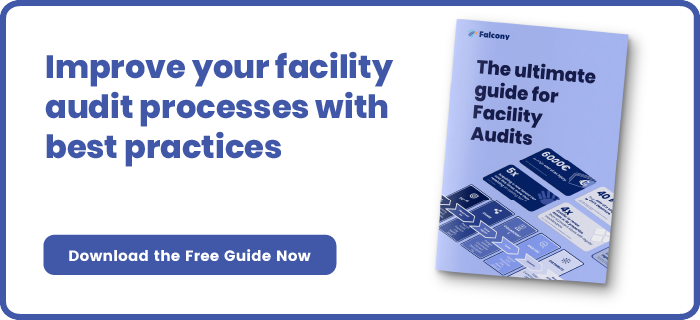Efficiency and organization are paramount in the world of logistics. Whether you're managing a warehouse, a distribution center, or a transportation network, the ability to optimize processes and eliminate wastage can significantly impact your bottom line. One powerful methodology that can revolutionize your logistics operations is the implementation of 5S audits. In this blog, we'll delve into what 5S audits are and how they can be effectively utilized in logistics to enhance productivity and minimize operational complexities.
Understanding 5S Methodology
The 5S methodology originated in Japan and forms the foundation of Lean manufacturing principles. It focuses on creating a systematic approach to maintain an organized, clean, and efficient workplace.
The five S's represent five key steps:
-
Sort: This step involves removing unnecessary items from the workspace. In a logistics context, it's about decluttering storage areas, aisles, and workstations by identifying and eliminating items that are redundant, expired, or damaged.
-
Set in Order: This step revolves around arranging items in an organized and accessible manner. In logistics, this means designing storage systems that allow easy access to frequently used items, reducing time spent searching for products or tools.
-
Shine: Regular cleaning and maintenance of the workspace are essential for safety and efficiency. Logistics areas can become messy due to constant movement of goods, so instituting regular cleaning schedules and practices is crucial.
-
Standardize: Creating standardized processes ensures that the gains achieved through the first three S's are maintained. This step involves developing clear protocols for tasks, labeling systems, and layout designs that are consistent across the logistics operation.
-
Sustain: The final S emphasizes the need to sustain the improvements made over time. It's about cultivating a culture of continuous improvement and regular audits to ensure the 5S principles are being followed consistently.
Implementing 5S Audits in Logistics
Now, let's explore how to apply 5S audits in logistics to achieve a well-organized and efficient operation:
-
Assessment and Planning: Begin by assessing your current logistics operation. Identify pain points, bottlenecks, and areas that require improvement. Plan how you'll implement the 5S methodology in each area, setting specific goals for each S.
-
Employee Training: Introduce your team to the 5S methodology. Explain the benefits and train them on the principles and practices. Encourage active participation and involve employees in the decision-making process.
-
Sort and Set in Order: Start by decluttering storage areas, discarding unused items, and reorganizing products for easy access. Implement efficient shelving systems and designate storage locations for different categories of goods.
-
Shine and Standardize: Establish regular cleaning schedules for different areas of your logistics operation. Develop standardized operating procedures (SOPs) for tasks like receiving, storing, and dispatching goods. Label shelves, aisles, and storage bins clearly for easy identification.
-
Sustain and Audit: Create a culture of continuous improvement by conducting regular audits. These audits should evaluate whether the 5S principles are being followed consistently. Use checklists to assess each area and involve employees in the audit process.
-
Feedback and Adaptation: Gather feedback from your team during audits. Use their insights to refine your 5S implementation. Adapt your processes based on the feedback received to address any challenges or suggestions.

Benefits of 5S Audits in Logistics
-
Enhanced Efficiency: A well-organized and clutter-free workspace reduces time wasted searching for items and streamlines processes.
-
Improved Safety: Clean and organized environments lead to fewer accidents and injuries, ensuring the safety of your workforce.
-
Reduced Costs: Eliminating wastage, optimizing storage, and improving processes can lead to significant cost savings over time.
-
Higher Productivity: When employees can easily find what they need, they can focus more on productive tasks, boosting overall productivity.
-
Better Customer Service: An efficient logistics operation translates to faster order processing and timely deliveries, leading to improved customer satisfaction.
Conclusion
Incorporating 5S audits into your logistics operations can be a game-changer. By embracing the principles of Sort, Set in Order, Shine, Standardize, and Sustain, you're laying the foundation for a more organized, efficient, and productive logistics operation. Remember, the key to success lies not only in the initial implementation but also in the continuous dedication to maintaining and improving these principles over time.

We are building the world's first operational involvement platform. Our mission is to make the process of finding, sharing, fixing and learning from issues and observations as easy as thinking about them and as rewarding as being remembered for them.
By doing this, we are making work more meaningful for all parties involved.
More information at falcony.io.






